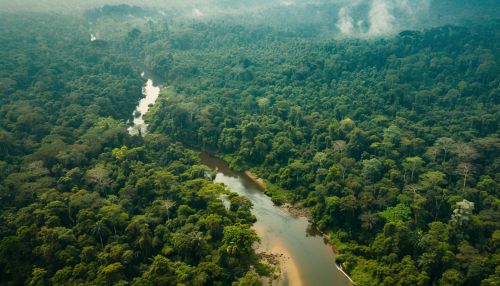Digital Images: Difference between revisions
(Created page with "== Introduction == A digital image is a representation of a two-dimensional image using a finite set of digital values, known as picture elements or pixels. Digital images are used in various fields, including photography, medicine, remote sensing, and computer vision. This article delves into the technical aspects, types, processing, and applications of digital images. == Types of Digital Images == Digital images can be broadly categorized into raster and vector imag...") |
No edit summary |
||
| Line 11: | Line 11: | ||
Raster images, also known as bitmap images, are composed of a grid of individual pixels, each with its own color value. Common file formats for raster images include JPEG, PNG, GIF, and BMP. Raster images are resolution-dependent, meaning their quality deteriorates when scaled up. | Raster images, also known as bitmap images, are composed of a grid of individual pixels, each with its own color value. Common file formats for raster images include JPEG, PNG, GIF, and BMP. Raster images are resolution-dependent, meaning their quality deteriorates when scaled up. | ||
[[Image:Detail-92169.jpg|thumb|center|A high-resolution photograph of a natural landscape, showing a dense forest and a river.|class=only_on_mobile]] | |||
[[Image:Detail-92170.jpg|thumb|center|A high-resolution photograph of a natural landscape, showing a dense forest and a river.|class=only_on_desktop]] | |||
=== Vector Images === | === Vector Images === | ||
Latest revision as of 21:21, 17 June 2024
Introduction
A digital image is a representation of a two-dimensional image using a finite set of digital values, known as picture elements or pixels. Digital images are used in various fields, including photography, medicine, remote sensing, and computer vision. This article delves into the technical aspects, types, processing, and applications of digital images.
Types of Digital Images
Digital images can be broadly categorized into raster and vector images.
Raster Images
Raster images, also known as bitmap images, are composed of a grid of individual pixels, each with its own color value. Common file formats for raster images include JPEG, PNG, GIF, and BMP. Raster images are resolution-dependent, meaning their quality deteriorates when scaled up.


Vector Images
Vector images use mathematical equations to represent images. They are composed of paths defined by a start and end point, along with other points, curves, and angles. Common file formats for vector images include SVG, EPS, and PDF. Vector images are resolution-independent, meaning they can be scaled to any size without losing quality.
Image Acquisition
Image acquisition is the process of capturing a digital image. This can be done using various devices such as digital cameras, scanners, and specialized medical imaging equipment.
Digital Cameras
Digital cameras use electronic sensors to capture light and convert it into digital data. The most common types of sensors are CCD (Charge-Coupled Device) and CMOS (Complementary Metal-Oxide-Semiconductor). These sensors consist of an array of photodiodes that convert light into electrical signals.
Scanners
Scanners are devices that capture images from physical documents or photographs. They work by moving a light source and sensor across the document to capture the image line by line. The captured data is then converted into a digital format.
Medical Imaging
Medical imaging techniques such as MRI (Magnetic Resonance Imaging), CT (Computed Tomography), and ultrasound use specialized equipment to capture images of the human body. These images are used for diagnostic and treatment purposes.
Image Processing
Image processing involves manipulating digital images to enhance their quality or extract useful information. This can be done using various algorithms and techniques.
Image Enhancement
Image enhancement techniques are used to improve the visual quality of an image. Common techniques include contrast adjustment, noise reduction, and sharpening.
Image Segmentation
Image segmentation is the process of dividing an image into multiple segments or regions. This is often used in medical imaging to isolate specific structures or in computer vision to identify objects.
Image Compression
Image compression techniques are used to reduce the file size of digital images. This can be done using lossless or lossy compression methods. Lossless compression retains all the original data, while lossy compression sacrifices some data for higher compression ratios.
Applications of Digital Images
Digital images have a wide range of applications across various fields.
Photography
Digital photography has revolutionized the way images are captured and shared. Digital cameras and smartphones allow users to take high-quality photos and instantly share them online.
Medicine
In medicine, digital images are used for diagnostic purposes. Techniques such as MRI, CT, and X-rays provide detailed images of the human body, aiding in the diagnosis and treatment of various conditions.
Remote Sensing
Remote sensing involves capturing images of the Earth's surface using satellites or aircraft. These images are used for environmental monitoring, agriculture, and urban planning.
Computer Vision
Computer vision is a field of artificial intelligence that involves teaching computers to interpret and understand digital images. Applications include facial recognition, autonomous vehicles, and object detection.
